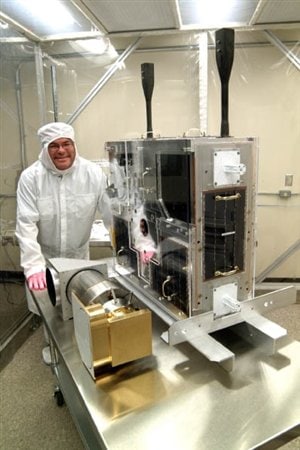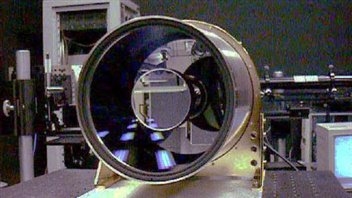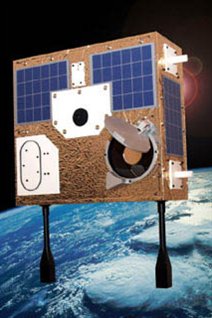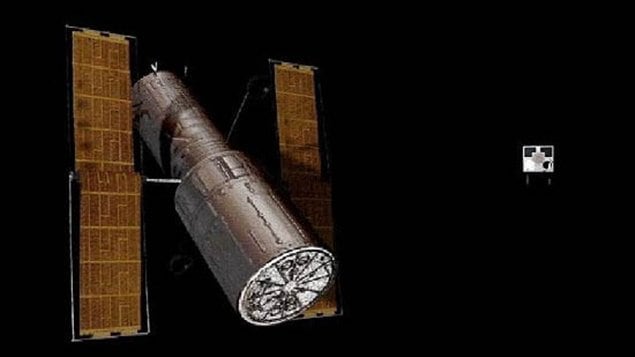It’s called MOST, which stands for “microvariability and oscillations of stars”.
When the tiny space telescope was launched 10 years ago it was Canada’s first ever space telescope.
While other space telescopes and satellites can cost many hundreds of millions, or more, MOST, the size of a large suitcase and weighing only 60 kilograms, it cost a mere $10 million.

MOST mission, with the MOST microsat and flight
space telescope assembly during testing at the
University of Toronto Institute of Aerospace Studies
(UTIAS). © Canadian Space Agency/Canadian Press
Orbiting the earth 820 km out in space, its more than twice as distant than the International Space Station.
Project leader and astrophysicist Jaymie Matthews of the University of British Columbia is extremely enthusiastic about the world’s smallest space telescope.
It’s original mission was to last 18 months and observe 10 stars. Its now been 10 years, and has observed over 5,000 stars.
Inside MOST, there is a 6-inch diameter telescope and a high quality digital camera which collects images of pulsating stars. This records the amount of light reaching us over time. They use the images to learn about the insides of the stars.
The scientists communicate with MOST through small radio dishes in Toronto, Vancouver, and Vienna.
Because it is so tiny compared to others, including the Hubble Space Telescope, it has earned the fond nickname as the “humble space telescope”.
Matthews says MOST has been doing science it was never intended to do and looking at parts of the sky he never thought would be accessible.
The Canadian Space Agency says the characteristics of two exo-planets, or planets orbiting a star outside our solar system, have been determined, and Just recently, three planets that could potentially support alien life were discovered by researchers around a star (Gliese 667C) that’s orbited by at least six planets.

© Ceravolo Optical Systems
Matthews also suggests that MOST may outlast two bigger and newer telescopes.
Launched in 2009, NASA’s $600-million Kepler, which also seeks planets had a failure of two of its four reaction wheels which act as gyroscopes and scientists are trying to save the 1,000 kg satellite. And, the main computers on the $250 million French space agency COROT telescope launched in 2006 have also failed.
In terms of satellite telescope technology astrophysicist Matthews says. “Suddenly Canada had a front-row seat doing the kind of science which normally had an admission price of millions of dollars and we did it first and set the way.” We went up three-and-a-half years before the COROT mission and more than six-and-a-half years before the NASA Kepler mission”
Canada has become a leader in micro satellites.

note reflector and lens opening
bottom right of MOST
© Ceravolo Optical website
In February a clone of MOST was launched by an Indian rocket to hunt for asteroids. Called NEOSsat, it cost the Canadian Space Agency $12 million.
Since then a Canadian military satellite Sapphire has been launched along with two car battery-sized satellites which will be part of the six satellite space astronomy mission called BRITE to study the evolution of stars.
Designed by the Space Flight Laboratory at the University of Toronto’s Institute for Aerospace Studies, the BRITE, (bright target explorer) nano-satellites are a Canadian-Polish-Austrian collaboration and weigh only 7 kilos.
Simon Grocott, the head of engineering at the U of T’s SFL, says the lab was set up originally to create MOST, and now is one of most successful producers of small and nano-satellites in the world.
“We have 14 satellite programmes in development,” he said, “ that’s certainly more than any nano-satellite manufacturer in the world”







For reasons beyond our control, and for an undetermined period of time, our comment section is now closed. However, our social networks remain open to your contributions.